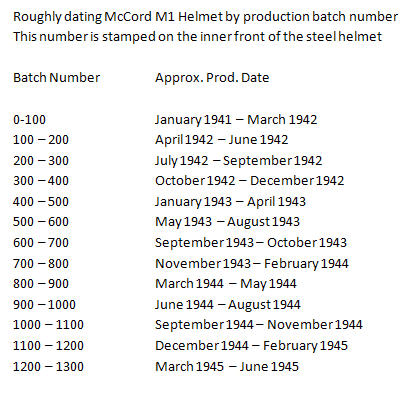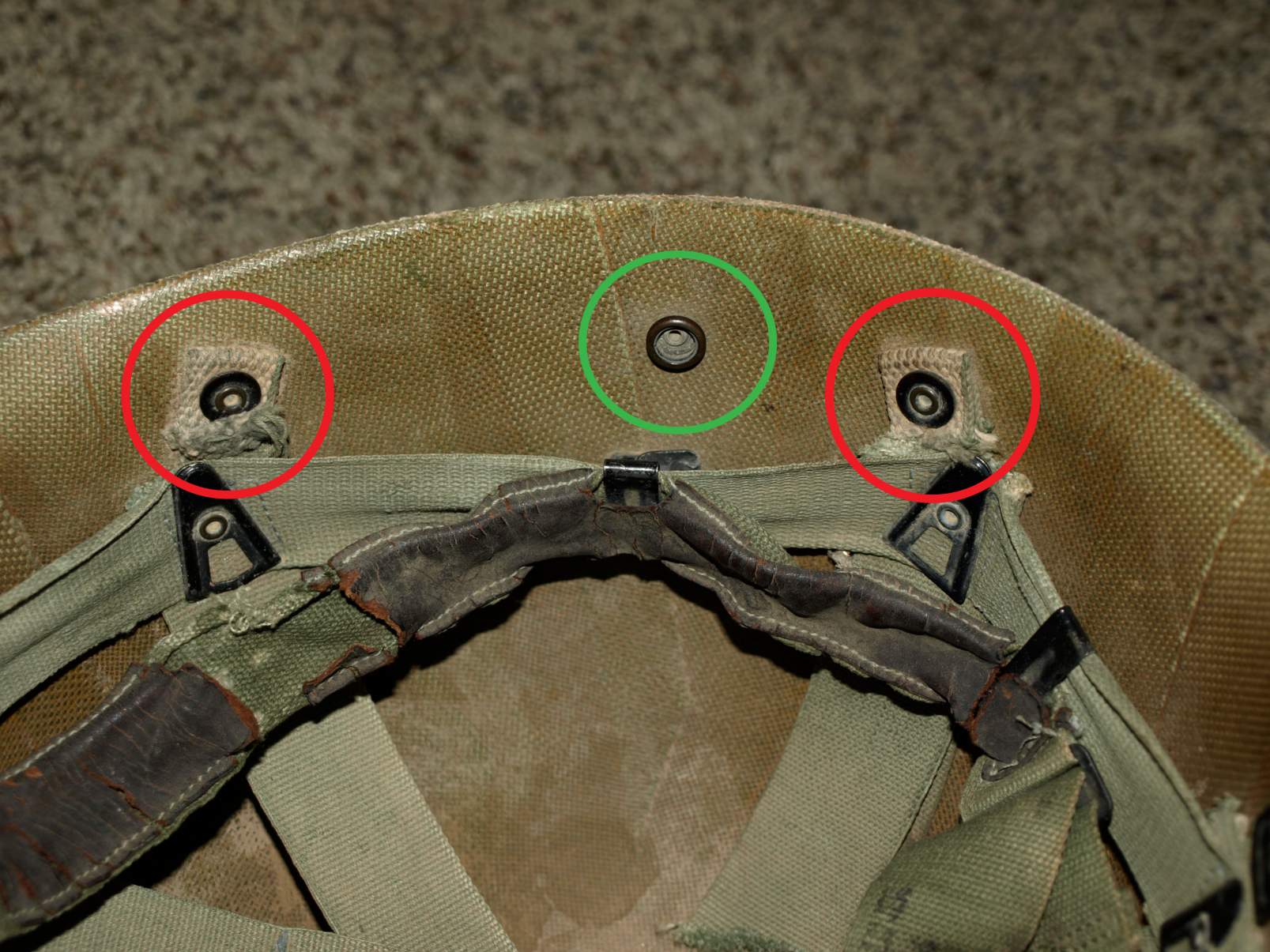- US M1 Helmet - United States Armed Forces - Historical War Militaria Forum
- Helmet Liner Maker Markings
- Покупки по категориям
Initial production helmets in to late had their rims seemed in the front.

From to late , the seam met in the front center edge of the steel helmet. The rim was made of stainless steel which did not rust but shined excessively when exposed, as the paint normally did not hold up well under constant contact with hard surfaces. At that time, the seam moved degrees to the center rear edge of the helmet. Originally, the chin straps were sewn onto fixed loops. This feature was installed on all front and early rear seamed helmets. The fixed loops were a weak point in the helmets design because the loops were in constant contact with the surface.
Enough became broken off that they were superseded by the swivel loop type chinstrap attachments in From to late , these loops were welded directly to the left and right side of the helmet.
- online dating erfolgscode?
- Recommended Posts?
- nina dobrev and ian somerhalder dating timeline;
- Dating M1 Helmets | ВКонтакте.
- On it, or sawdust, was an M helmet and form..
The airborne used a fixed loop in the shape of a half circle for most of the war but also used the standard swivel loop by the end of the war. From to late , chin straps were constructed of cotton webbing in olive drab shade number three top.
It was produced in different shades from khaki to light green. Although officially phased out in , the number three shade was used passed , until supplies were exhausted. The decision to adopt the shade of field gear material to the darker olive drab number seven bottom was made by the end of It is usually found sewn on to rear seamed helmet shells. Initially they were dyed olive drab number three which was technically a greenish khaki, but in practice was produced in varying shades from khaki to greenish khaki.
In , a decision was made to phase out olive drab number three in favor of olive drab number seven, or dark olive drab. By the end of , the new color change was implemented. This change was not completed over night by all manufacturers as the old number three material was normally used until exhausted. From to late , the chin strap buckle was made from a brass casting that can be readily distinguished by its brass construction and the raised bar cast into the top of the buckle.
After , a simplified buckle was developed to ease construction and conserve brass.
US M1 Helmet - United States Armed Forces - Historical War Militaria Forum
The new buckle, stamped out of steel and painted black would remain unchanged for the rest of WWII. The adjustment keeper was placed at the end of the chinstrap to secure the extra webbing after adjustment. The manufacturing processes tabs used were the same as the buckle. On the underside of the buckle were two rounded tabs. These tabs were be replaced by square tabs in These parts are located on the right chin strap.
Helmet Liner Maker Markings
Early adjustment buckles were cast in brass with a distinctive raised bar in the center and finished black. The end cap was used to secure the free end of the chin strap once it had been adjusted to the wearers chin. In , in order to ease production and save brass, a new blackened steel stamped buckle was approved along with a steel end cap. Late saw the resumption of brass in the production in metal hardware.
Покупки по категориям
This was the last WWII specification regarding the chin strap assembly. This piece is located on the left chin strap and is used in conjunction with the buckle on the right side to secure the chin strap assembly under the wearers chin. The hook underwent the same material and finish changes as the buckle and securing cap at the same time.
By , new specifications had been adopted which changed how the M1 helmet was produced. In the early s, a fine sand aggregate was applied to new and refurbished older M1 helmet shells. If the exterior of the helmet feels like fine sand it is not a WWII helmet. If the chinstrap "bales" are welded to the helmet and cannot move then they are "fixed bale" which I believe they stopped making in So if your's is swivel bale Which it appears to be then it was made in or later.
Also, I can't really tell from the pictures but if the webbing in the liner is a tannish color than it is ww2, but if it is a greenish color than it looks to have been re-issued post-war by CAPAC. So, i think what you have is a Korean War m1. Hi, Inside the helmet liner you will see a makers mark embossed into the crown, could you tell me what the make is?. WWII manufacture are always sewn on the helmet and liner also appear to have the original finish od paint the liner can easily be identified as mid war production by the color of the A washers , late WWII liners had blackened A washers, yours look like the earlier painted or phosphate washers.
Yes, the chinstraps are sewn onto the bales. Also, there isn't a date or any markings on the headband. Also, are you sure that the shell is ww2, and not from the Korean war like the other dude said? Because I was really hoping for a fully vintage ww2 helmet.
The makers mark looks kinda like this: I have never seen a Korean war photo with the metal clamp on type chin straps, even though they may have been used. In US M1 steel helmet forum. M1 helmet on Ebay. Bookmarks Bookmarks Digg del.
- ➤ Dating m1 helmet shell.
- .
- ?
- dating in kolkata free.
- ;
- webdunia matchmaking marathi!
- 22 year old guy dating 17 year old;
